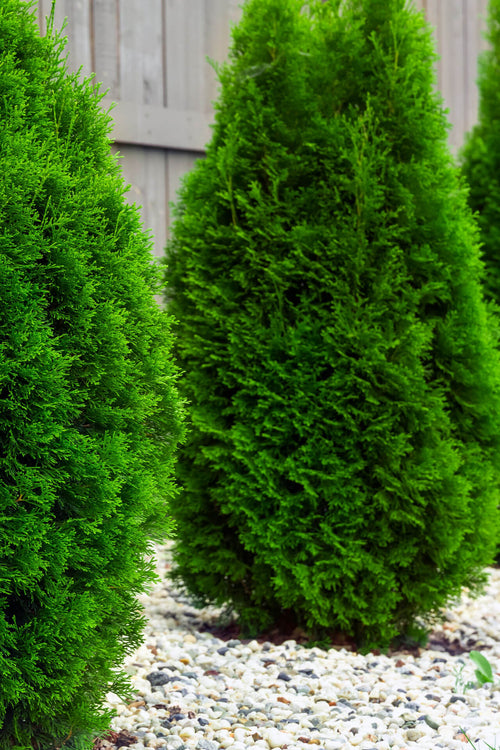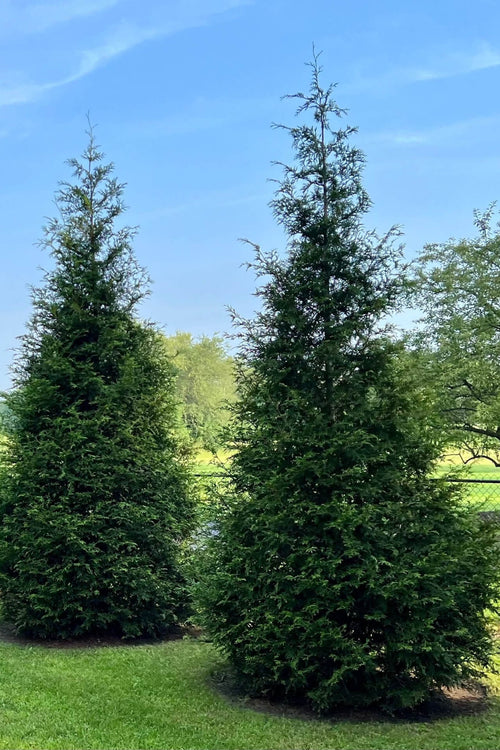Arborvitaes are wonderful shrubs which can act as a fence for your private property.
You can grow arborvitaes in a straight row or as a plant individually. Arborvitaes are adaptable to various soils.
Therefore, growing arborvitaes in your garden should not be a very tedious task. Arborvitaes prefer colder climates to thrive, and they are evergreen trees that wear emerald green color throughout the year.
Arborvitaes can be planted as hedges or specimens in your home garden. They require less maintenance, and they can be pruned to get the desired effect in your garden.
American Arborvitae – The American Arborvitae is also known as the American dark-green arborvitae because of its dark green appearance. This tree grows in a pyramid shape, so it is thick at the bottom and starts narrowing towards the top. This tree is a Native American tree and has fan-shaped leaves and attractive purple-brown pine cones which are a ½ inch long with 8 to 10 scales. They are highly resistant to drought and can be grown in most soils which are moist and well drained. The pH level required to grow an American Arborvitae is 6.0 – 8.0.
Thuja plicata x standishii – This tree is also called Thuja Green Giant Arborvitae because it grows 20-35 meters in height and spreads up to 1 meter. Thuja plicata x standishii is a Japanese name given to this tree as it is a Native tree of Japan and mainly used for timber products due to its durability. The timber has an attractive scent and is also waterproof. Thuja plicata x standishii (Thuja Green Giant Arborvitae) is also used for fencing and creating a partition between two areas. They require moist soil, and the soil should be well-drained.
So, if you are looking for fencing your garden or planting hedges, then you can choose from these different varieties of Arborvitae trees.
Source of Information on Aborvitaes
https://www.tnnursery.net




















































